16 million Americans have dropped out of the labor force in the last 10 years: The growth of long-term unemployment, low wage labor, and distorted employment figures.
- 0 Comments
The unemployment rate is looking much better than it should because we have a very large number of Americans that have dropped out of the labor force. How many? In the last 10 years 16.2 million Americans have dropped out of the labor force. The total number of Americans not in the labor force is over 92 million. What is more surprising is that most of the jump in the last 10 years occurred once the recession was labeled as being officially over. When you eliminate counting a large pool of your population, it is easy to understand why the unemployment rate appears to be so low. However the nation is largely shifting to one of low wage labor. Corporate profits are being bolstered by massive slack in the employment markets and the shifting of benefits from corporations to employees. This has been incredibly difficult for middle class families that are witnessing inflation and their purchasing power decline. It might be useful to examine where our employment situation now sits given that we are now half a decade into this so-called recovery.
Not in the labor force simply keeps on growing
The US population has grown by 8 percent since 2004 from 292 million to 318 million. Those not in the labor force has grown by 17 percent in this same period. Some of this can be accounted for by aging baby boomers but as we have noted, most nearing retirement have little to no money to their name so the new retirement plan is no retirement. Many will be working until they drop.
A large portion of the growth in the “not in the labor force†category is largely coming from deep structural changes. Take a look at the growth here:
You can see that most of the growth has come after the recession officially ended. This is coming at a time when our top 10 employment fields are largely in the low wage category:
Source: BLS
“Roughly 58 percent of jobs created since the Great Recession ended have been lower wage jobs.â€
It is telling how many of our new jobs are now coming in the form of low wage work. Most of these jobs come with little to no benefits and are very transitory in nature. It should be no surprise that first time home buying is near generational lows since who would feel confident buying a home when they are in temporary or low wage work?
It also can be seen in the number of weekly hours being put in by American workers:
Keeping hours low is a big plus in terms of avoiding benefits to workers. It might surprise people around the world that a large portion of our population is working in low wage labor. It makes perfect sense as the middle class continues to be hammered. If we look at other countries we will find that we have a very high number of low wage workers as a percentage of our working population:
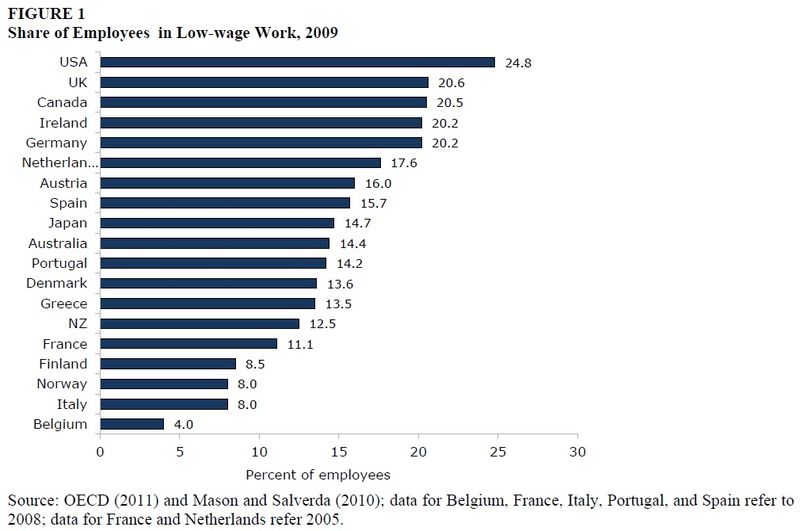
This might shock people. It also helps to explain the high number of people going into big debt to go to college with the aspiration that they will somehow break into the middle class. Given the cost of higher education today, that value proposition has to be carefully examined.
The trend to lower wage labor and a large not in the labor force category has led to a dwindling middle class. The trend is rather clear and few will dispute the facts. All we need to do is look at household income adjusted for inflation:
When wages fall behind because of the power of inflation, you ultimately end up with a diminishing standard of living. Your dollar is simply unable to purchase what it used to. The fact that we have added 16.2 million Americans to the “not in the labor force†category over the last 10 years is astounding. As we have noted, this is twice the rate of population growth signaling something else is going on. Of course if we look at other stats, we are told that all is well. The stock market hit a record this year but this does little good to Americans since half of the country doesn’t even own one stock outright. Many have simply dropped out of the labor force.
If you enjoyed this post click here to subscribe to a complete feed and stay up to date with today’s challenging market!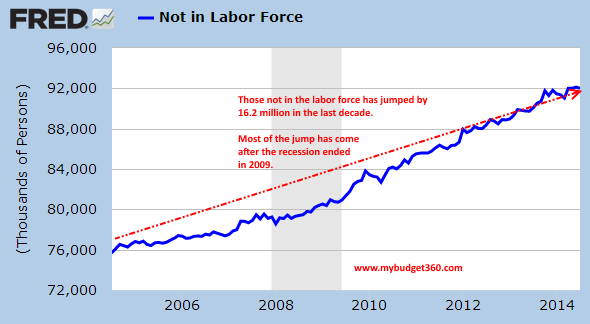
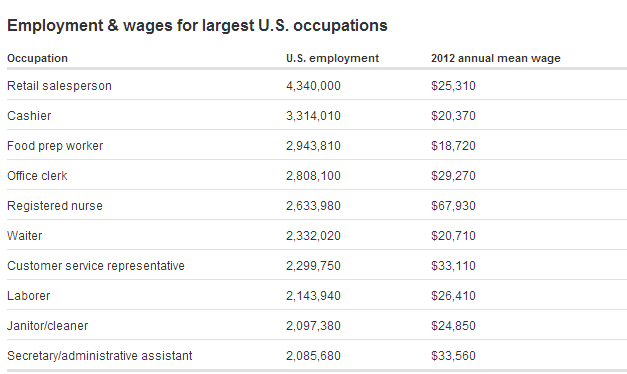
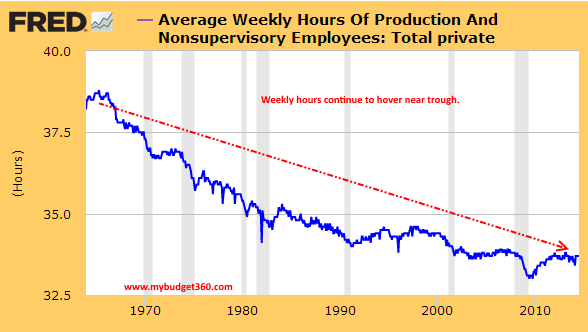
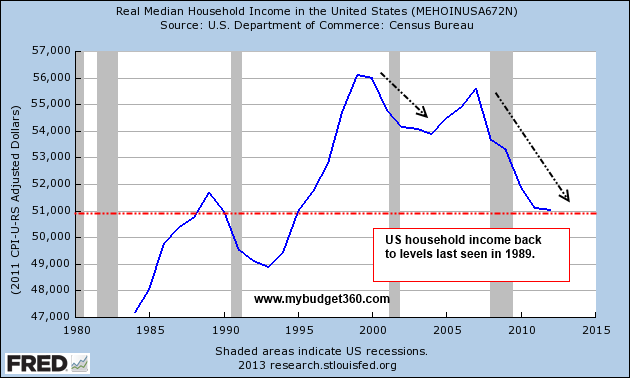
 If you enjoyed this post click here to subscribe to a complete feed and stay up to date with today’s challenging market!
If you enjoyed this post click here to subscribe to a complete feed and stay up to date with today’s challenging market!